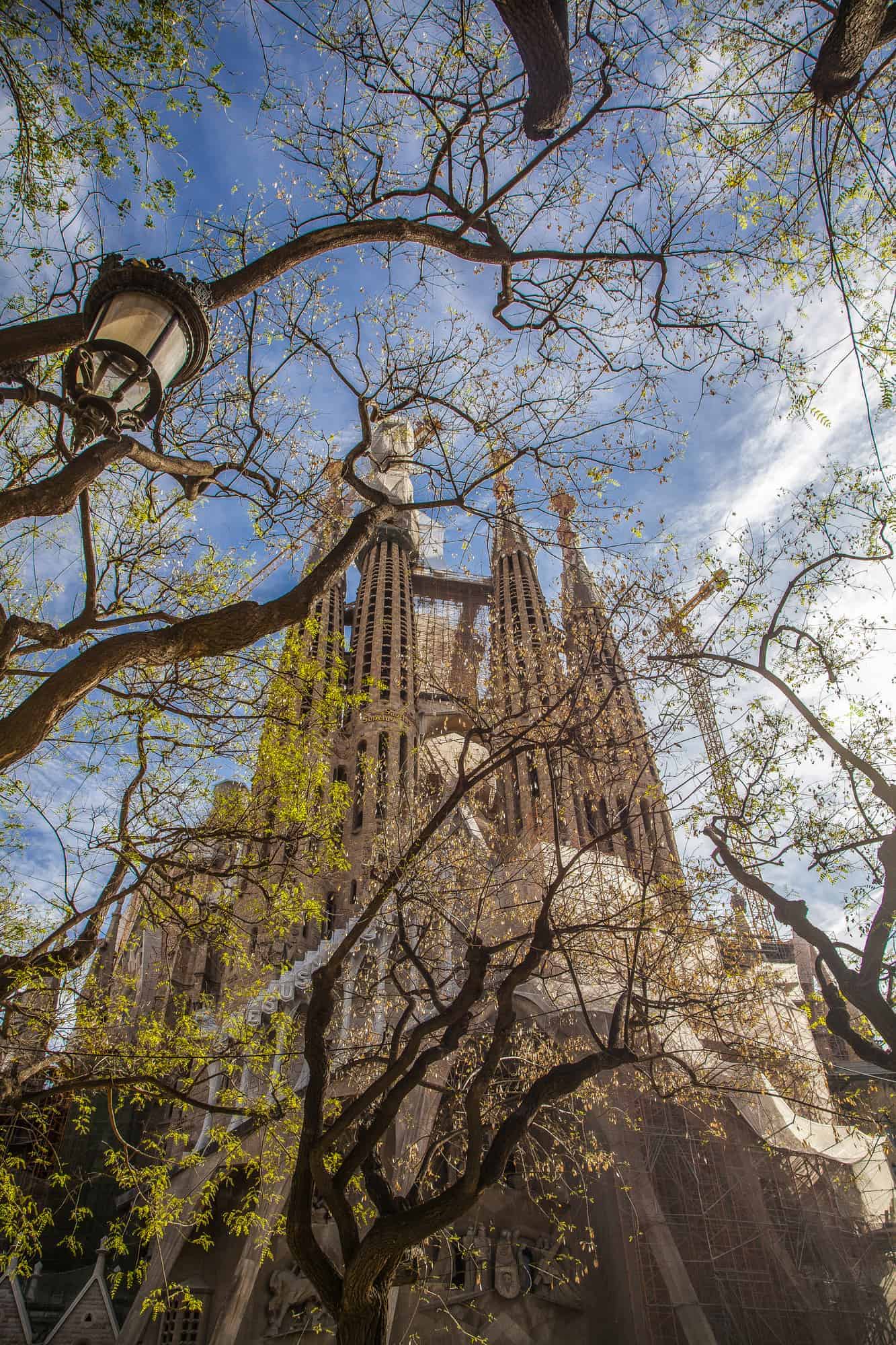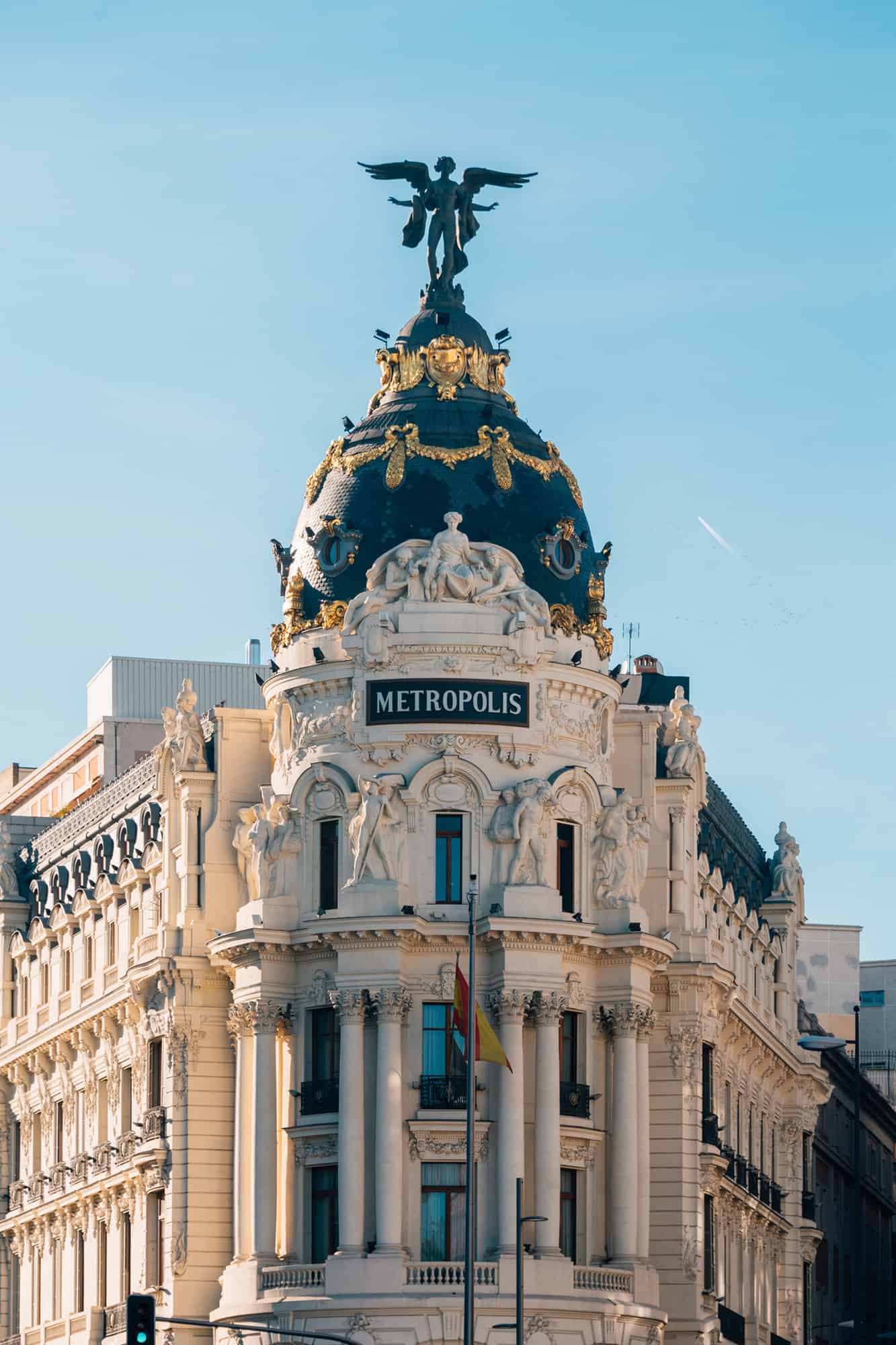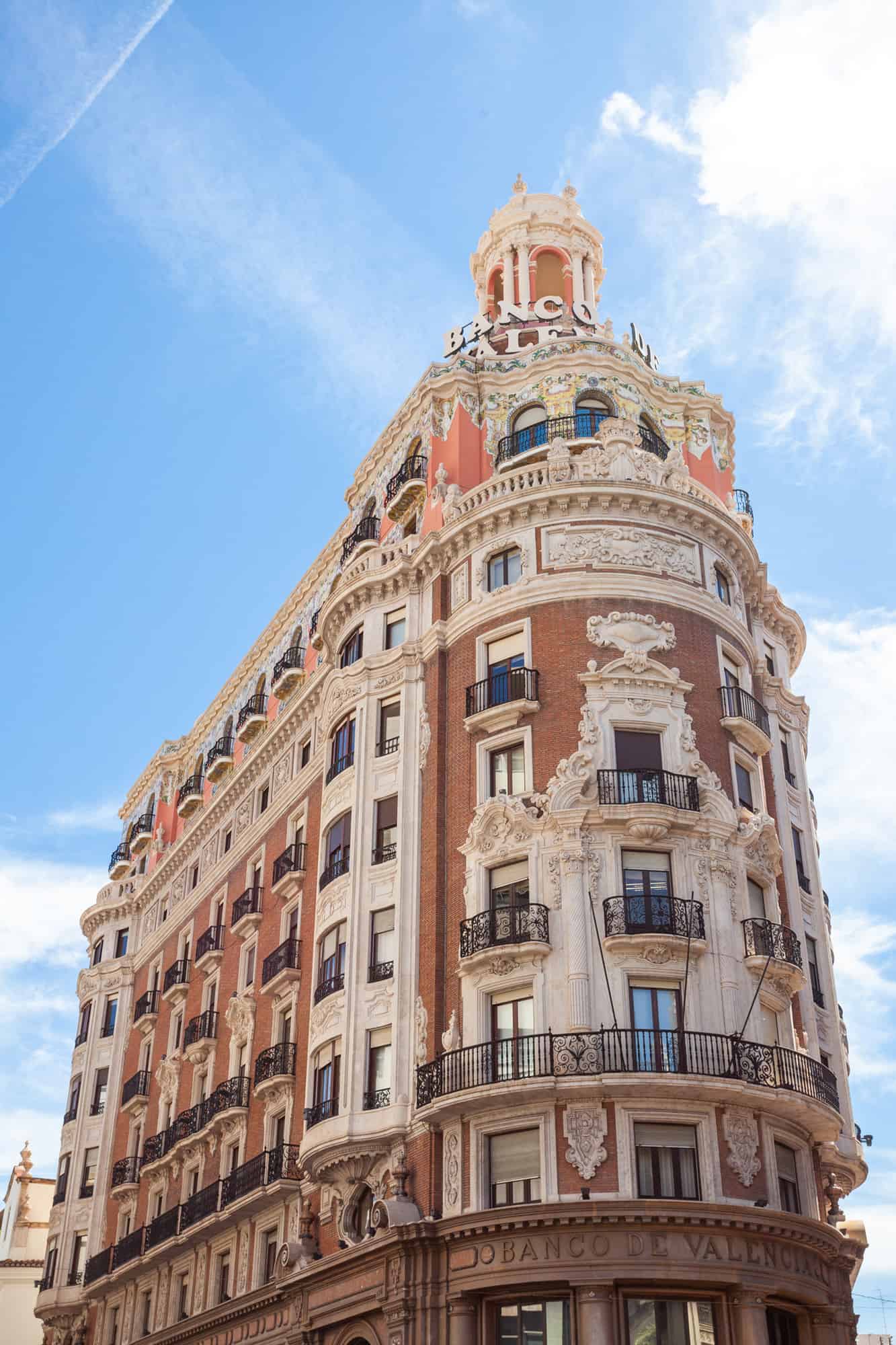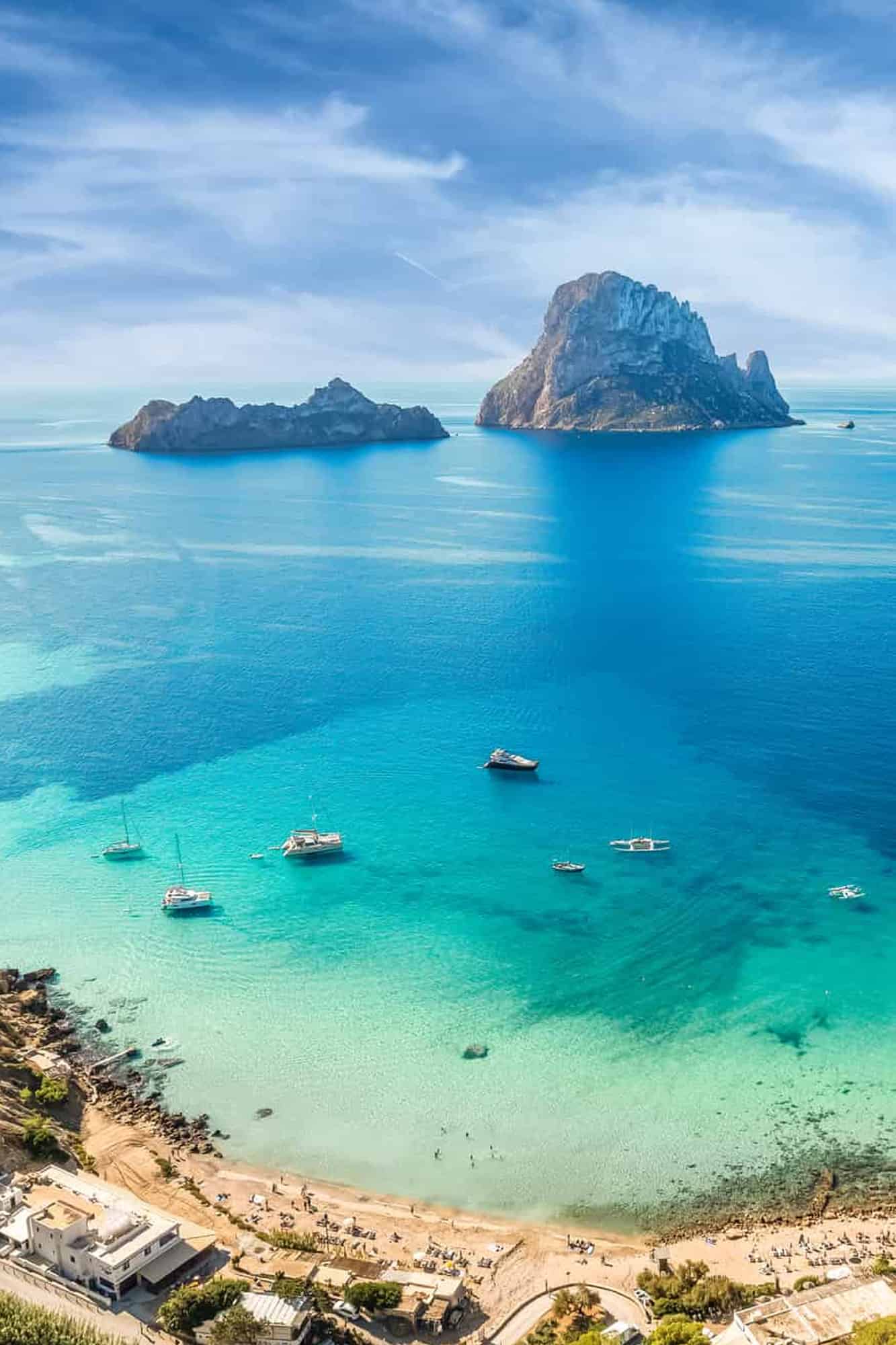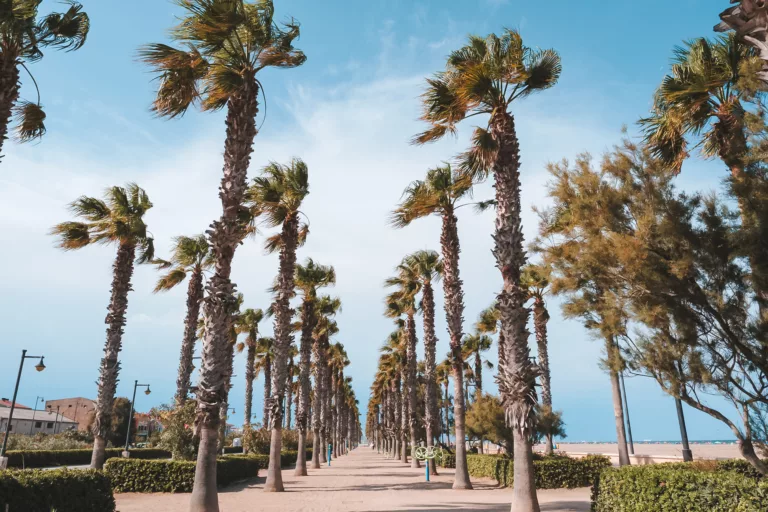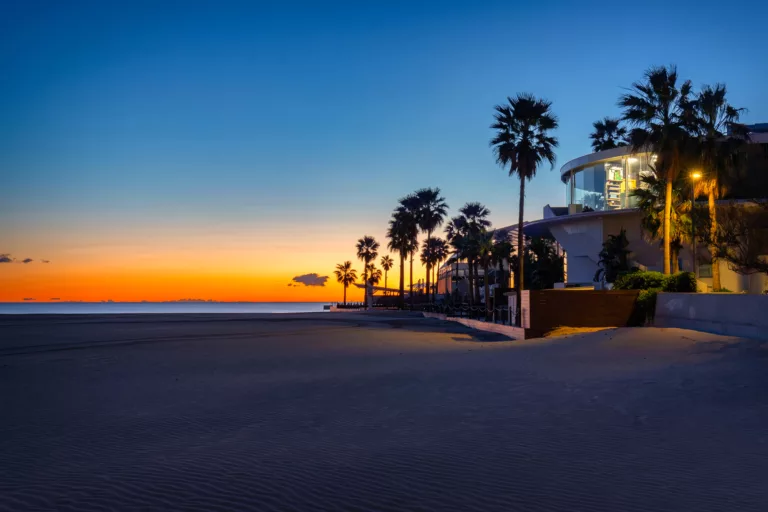28 Pros and Cons of Living in Valencia, Spain (2024)
Valencia is one of the most exhilarating places to live in the world. It has everything you would need from a buzzing, cosmopolitan city. Over 300 days a year of sun, art and cultural attractions, lively nightlife, great food, nature parks, and golden beaches.
But, as with anywhere in the world, there are pros and cons of living in Valencia, Spain. In this article, I’ll explore everything from the fun aspects, landmarks and cost of living, to covering some of the not-so-positive factors too.

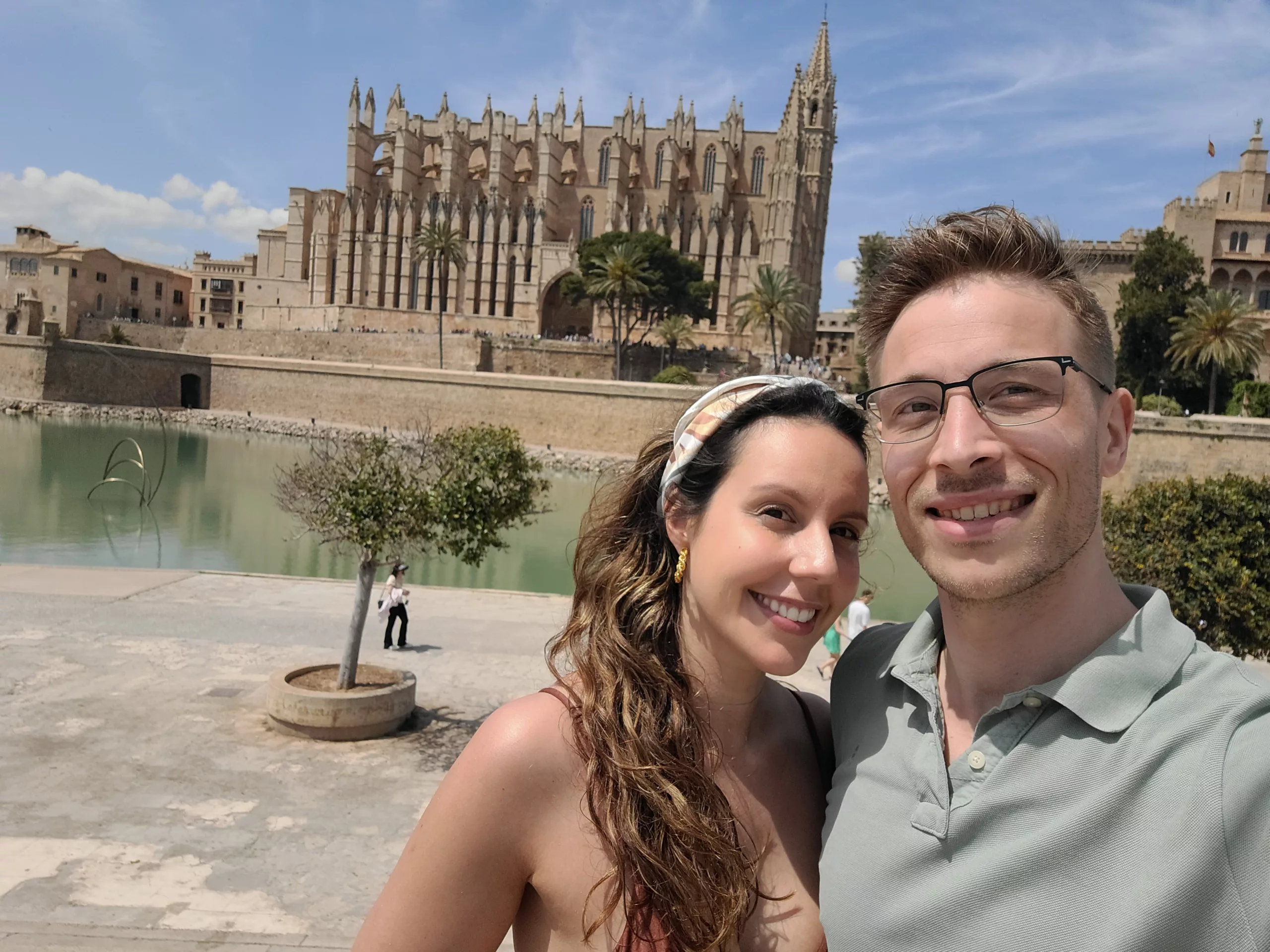
Hi, we’re Timon & Filipa!
We travel across Spain in our motorhome, Speedy, and update TravelSpain24 with fresh content, practical tips, and personal stories from the road. Our goal is to help you experience Spain beyond the typical tourist trails.
Pros of living in Valencia
Valencia has fantastic weather, history, culture, food, beaches, and a fabulous alfresco lifestyle. Revered by families, there are amazing schools and healthcare can be accessed for free if you are from the EU or contribute to the system. The city’s transport options allow for easy navigation too! In this article, I’ll look at the pros and cons of living in Valencia, Spain to help you decide whether it’s the right city for you.
If you’re still unsure, check out our detailed analysis of Valencia’s allure as a destination.
1. The weather

With almost year-round sunshine and warm temperatures, the weather in Valencia makes it the perfect place to enjoy an outdoor lifestyle.
Temperature in Valencia
Valencia is blessed with dry weather for most of the year. Summers are warm, with humidity from June to September, and winter months are cooler, with some windy days. The temperature varies, averaging at around 12ºC (54ºF) in December and January, to reaching sizzling highs of up to 30ºC (86ºF) in July and August.
2. Mediterranean Sea

Valencia sits on the east coast of Spain on the shores of the Mediterranean Sea. Several beautiful beaches flank the eastern seaboard – most are clean, family-friendly, and safe for swimming. The water temperatures are warm, averaging between 15ºC (59ºF) in winter, to 27ºC (80ºF) in the height of summer – perfect for swimming, snorkeling, and partaking in watersport activities.
Valencia has its own port with regular ferries transporting passengers to the balmy Balearic Islands of Mallorca, Menorca, and Ibiza.
3. Wide Beaches
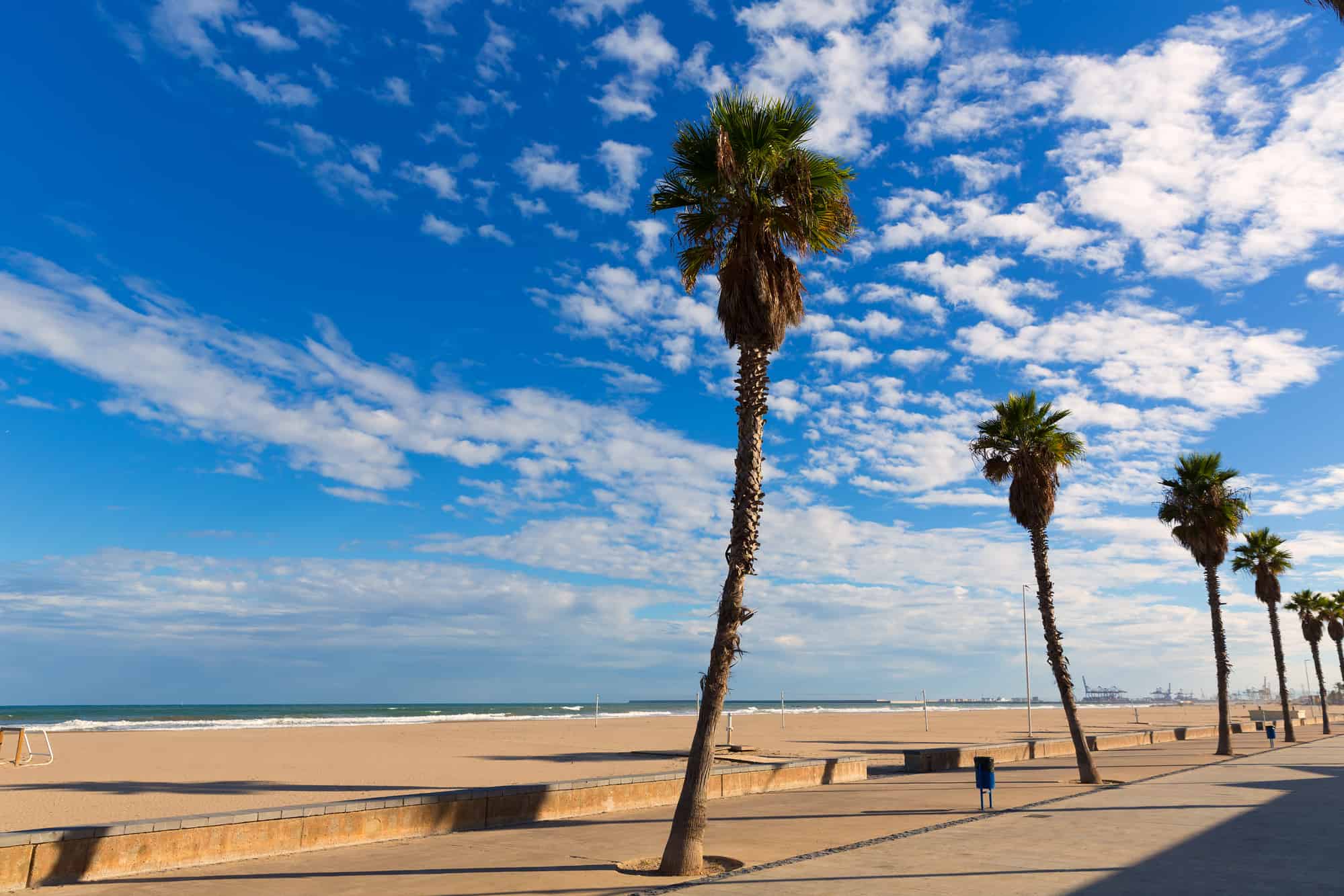
Most of Valencia’s beaches are easily accessible from the center. The one closest to the heart of the action is Playa de las Arenas. Restaurants serve huge portions of paella, buzzing nightclubs along the promenade, and plenty of activities to enjoy.
To the north of the harbor, Malvarrossa Beach is a wide, long sandy stretch with a relaxed vibe – where locals chill at the weekends, and it’s easily accessible via bus.
If you find yourself living in the suburbs, Playa de Patacona is a peaceful spot with clear, crystalline waters for swimming and it’s close to beachfront restaurants.
Planning to travel to Spain with pets? South of the city center is Playa de Pinedo, with a dedicated place for dog walking.
4. Low population density
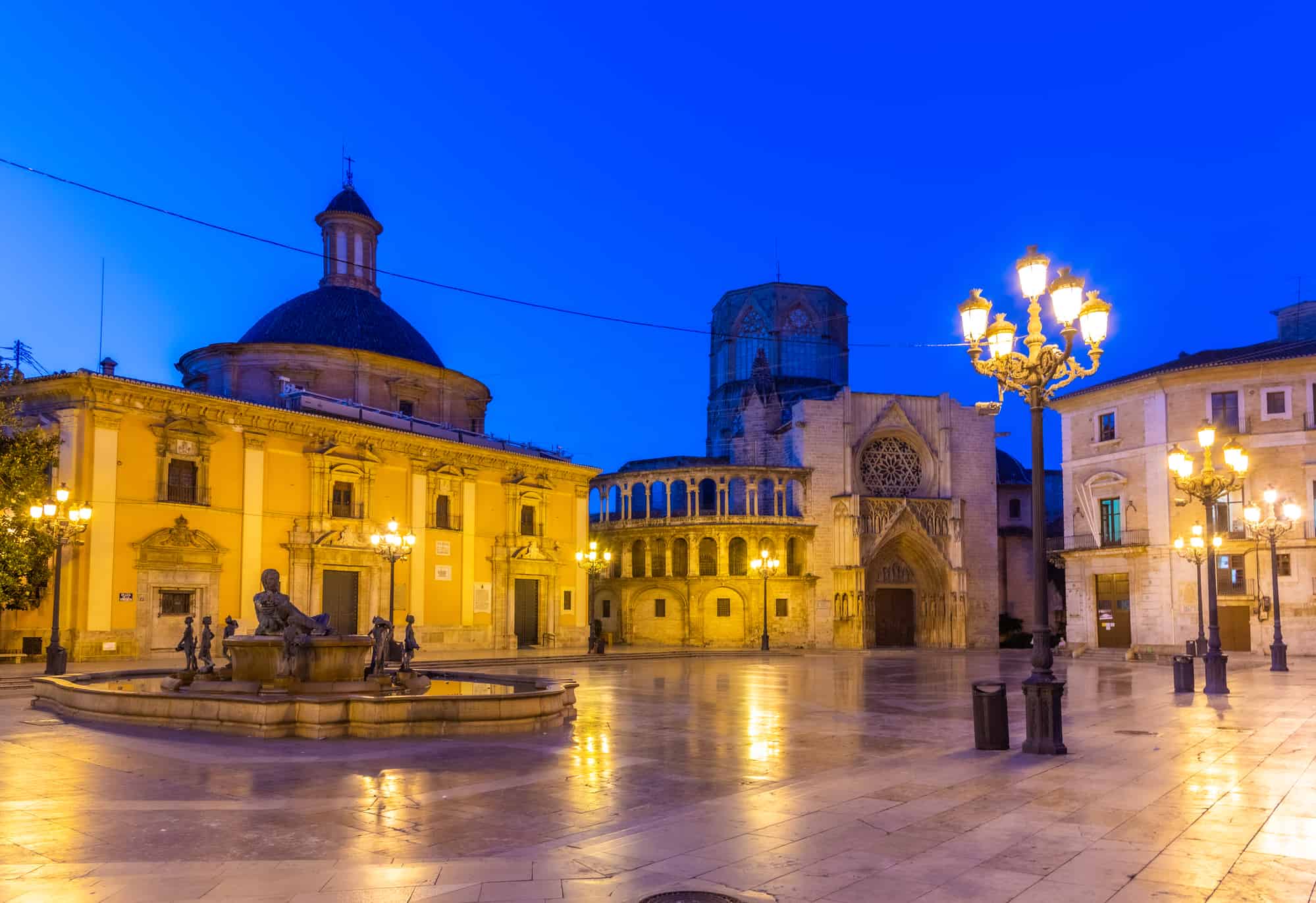
What are the benefits of low population density in a city? I’m glad you asked! Living in cities with fewer people per square kilometer/mile equates to greater access to housing and natural resources, the crime rates are usually lower, and there’s no overcrowding – that’s just for starters.
Let’s take a look at how Valencia stacks up against Barcelona, Madrid, and other cities in Spain.
Population Density in Valencia (2024)
In 2024, Valencia is estimated to be home to around 838,301 people, representing an increase of 1,444 residents from last year.
Compared to Barcelona where population density is high—1.7 million people and 16,000 residents per km2, Valencia is relatively low density with just 5,800 people per km2.
Madrid, the Spanish capital, is home to 6.7 million people in the greater metropolitan area. It has a population density similar to Valencia 5,400 residents per km2, although the land area is larger and communities are more widely spread.
Even in Seville – a city with a similar population to Valencia, there are 13,000 residents living in a square mile area in 2024.
Population in Valencia (2024)
The population of Valencia is made up primarily of Spanish residents. Only 13% of residents are foreign nationals. Most expats are European (Romanian and Italian in particular), Chinese, Pakistani, and South American.
There are a number of British and American expats living in the city, and more in resorts along the Costa Blanca including Alicante, Benidorm, and Torrevieja.
5. Vibrant culture

Valencia is known for its vibrant cultural festivals, particularly Las Fallas, which occur in March each year. This huge street party, combined with fireworks, costumes, and statues, lasts for almost three weeks, attracting over two million people.
During late August, the region also hosts La Tomatina. This festival sees visitors worldwide engaging in a mammoth food fight with thousands of tomatoes in the streets.
The arts and music also encompass a large part of Valencian culture. The city is known for its beautiful tiles, silks, and ceramics, and live music concerts often occur in venues throughout the city.
6. Food & Paella
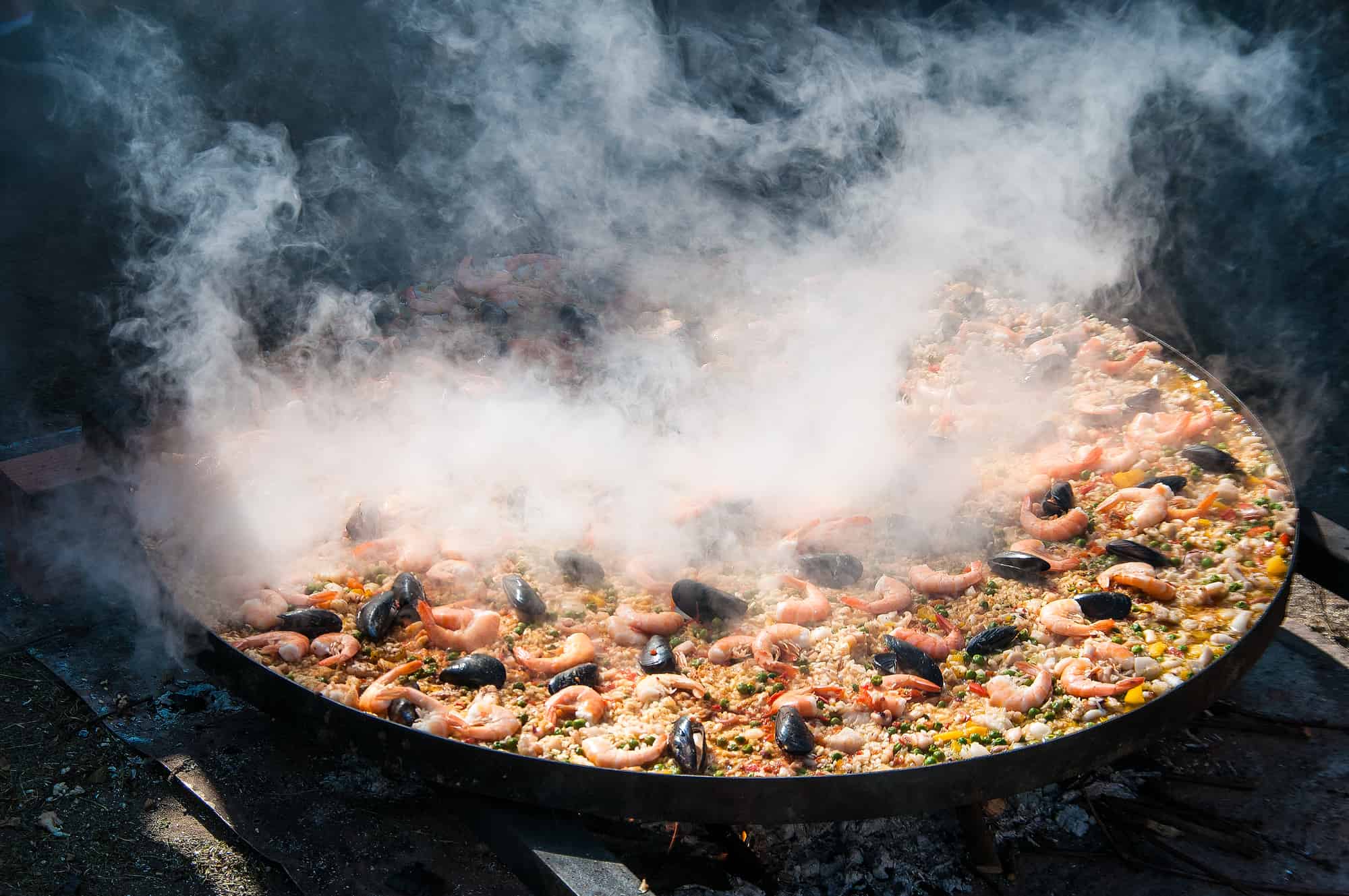
Valencia is also the foodie capital of Spain. The mouthwatering rice and seafood paella was invented here, as was the delicious noodle dish fideuà. Fish features highly on menus, with a specialty being codfish topped with roasted red peppers.
Local drinks include “horchata”, a drink made from tiger nuts served with “fartons” – a type of glazed bread. There’s also alcohol – Agua de Valencia, made with an intoxicating mix of orange juice, gin, vodka, and sparkling wine.
If desserts are more your thing, don’t forget to try Bunyols. These pumpkin fritters are usually enjoyed during the Las Fallas festival. You will also find many dishes made from Valencia oranges – such as ice cream, flans, and cakes.
At Christmas time, Turrón is sold in shops. The flavored nougat is packed with almonds, coconut, chocolate, and other delights. To get a full grasp of what the country has to offer, visit one of the grocery stores in Spain.
7. Green city
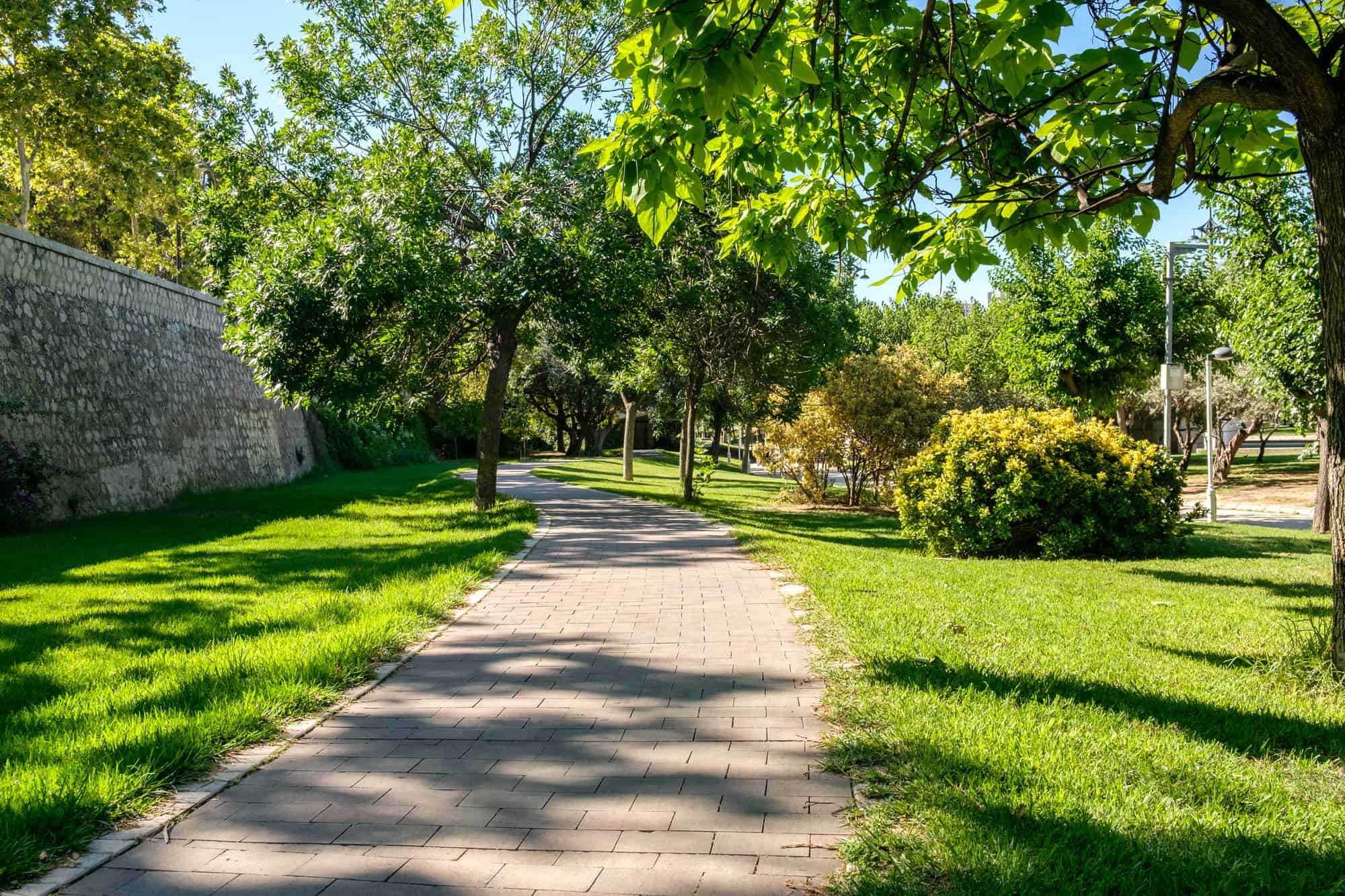
Valencia’s city planners did a great job blending urban structures with lush green spaces. One of the country’s largest parks (second only to Retiro Park in Madrid) is located here – Jardin del Túria. The park covers nine kilometers comprising cycle and jogging paths, play areas, and lawns.
Another to mention is Jardin de las Hespérides. This small garden is dotted with sculptures, trees, and tiered terraces – a beautiful serene spot in the city.
If you’re moving to Valencia with kids, you’ll adore Parque de Cabecera. It’s next to Bioparc Zoo, boasting playgrounds and swan pedaloes on the lakes.
If you want to learn all about medicinal herbs and rare plant species, Jardin Botánico is the place to visit. These gardens date to the 16th century – a place for relaxation and leisurely afternoons. You can also watch jazz here in the summer.
8. Low cost of Living
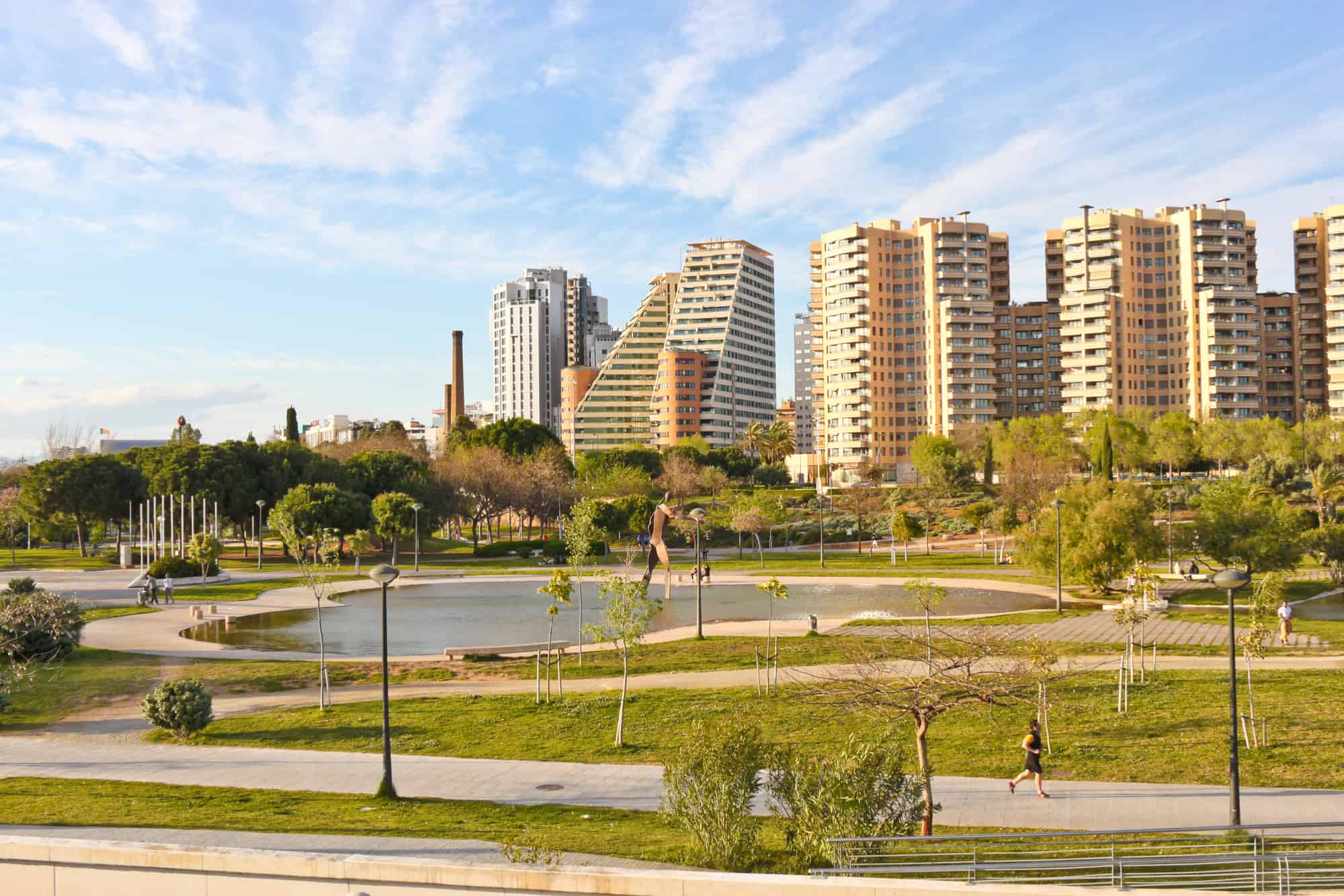
Valencia has a low cost of living compared to other Spanish cities. For example, if you’re moving here solo as a student, or to begin a new adventure, your monthly costs excluding rent will be around €650 EUR. For a family of four, costs average (excluding rent) to approximately €2,200 EUR per month.
Rental Properties
A one-bedroom city center apartment costs around €800 EUR per month to rent, while a three-bedroom property in the suburbs can be less than €1000 EUR per month. These rental prices are around 26% lower than Barcelona and 20% lower than Madrid.
Utilities/Transport/Dining Out
A great way to keep costs down includes pre-purchasing transport tickets €30 EUR per month. Having the internet installed at home costs around €28 EUR per month. Dining out is also cheaper than in other major cities, with a three-course meal for two in a good restaurant costing around €45 EUR.
9. Beautiful old and new architecture

One of the things I love the most about Valencia is its mix of ancient and contemporary architecture. From the historic center to the modern, futuristic City of Arts & Sciences, the city has much to see.
Some highlights include Torre de Quart dating to 1392, and Santos Juanes Church, a gothic-style National Historic Monument next to Mercado Central.
The Church and Convent of Carmen is one of the city’s oldest structures, dating to the late 1200s. The “Lonja de la Seda” is another glamorous building showcasing the city’s wealth from trading silks during the 15th century.
On the opposite end of the spectrum, the City of Arts and Sciences captivates with glass-encased buildings shaped like a giant eye, futuristic domes, museums, and bridges.
10. Las Fallas Festival

Festivals in Valencia
In addition to Las Fallas in March, Valencia hosts festivals yearly. Here are a few of the most exciting and memorable events to attend.
January
The Cavalcade of the Magi takes place on the 5th of January. A time when children are gifted toys and candy as the procession winds its way through the city. This event incorporates floats, music bands, and dancing.
March/April
Maritime Holy Week takes place before Easter week in El Cabanyal, a former fishing village in the city. Locals dress in costumes, parades showcase figures from biblical stories, and there are music concerts and masses to attend.
April
Foodies should make room for the fabulous Paella Festival held during the third week of April. Expect huge steel pans brimming with saffron rice, copious amounts of beer, live music, street food trucks, and karaoke.
July
The Great Valencia Fair (Feria) in July dates back 150 years. It is one of the most popular events on the calendar. The party atmosphere continues for an entire month with concerts, fireworks, flamenco, theater performances, paella tastings, parades, and medieval markets.
October
If you enjoy delving into city heritage, the Moors and Christians Festival in the second week of October is a must-visit. Expect to see colorful markets and parades showcasing the city’s rich heritage.
Read: Wine Festivals In Spain
11. Great public transport
Central Valencia is easily accessible on foot or by bicycle, but the public transport system is pretty great too if you want to reach other city areas. Traveling by bus is cost-effective. With almost 60 daily routes, getting from one neighborhood to another is easy.
If you plan to use the bus, I would recommend downloading the app EMT Valencia. It tells you the bus times, routes, and helps ensure you get off at the right stop!
The city also has its own Metro and tram service. Tickets cost €1,50 EUR for a single trip in one zone, and you pay €1 EUR for a card that can be topped up depending on how many journeys you wish to make.
Alternatively, a SUMA10 travel card costs €5-15 EUR depending on the zones you are traveling in and includes up to 10 trips on most modes of public transport. These can be purchased at Metro or tram stations.
Valencia also has an efficient rail network connecting you to Barcelona, Madrid, and France.
12. Family-friendly city
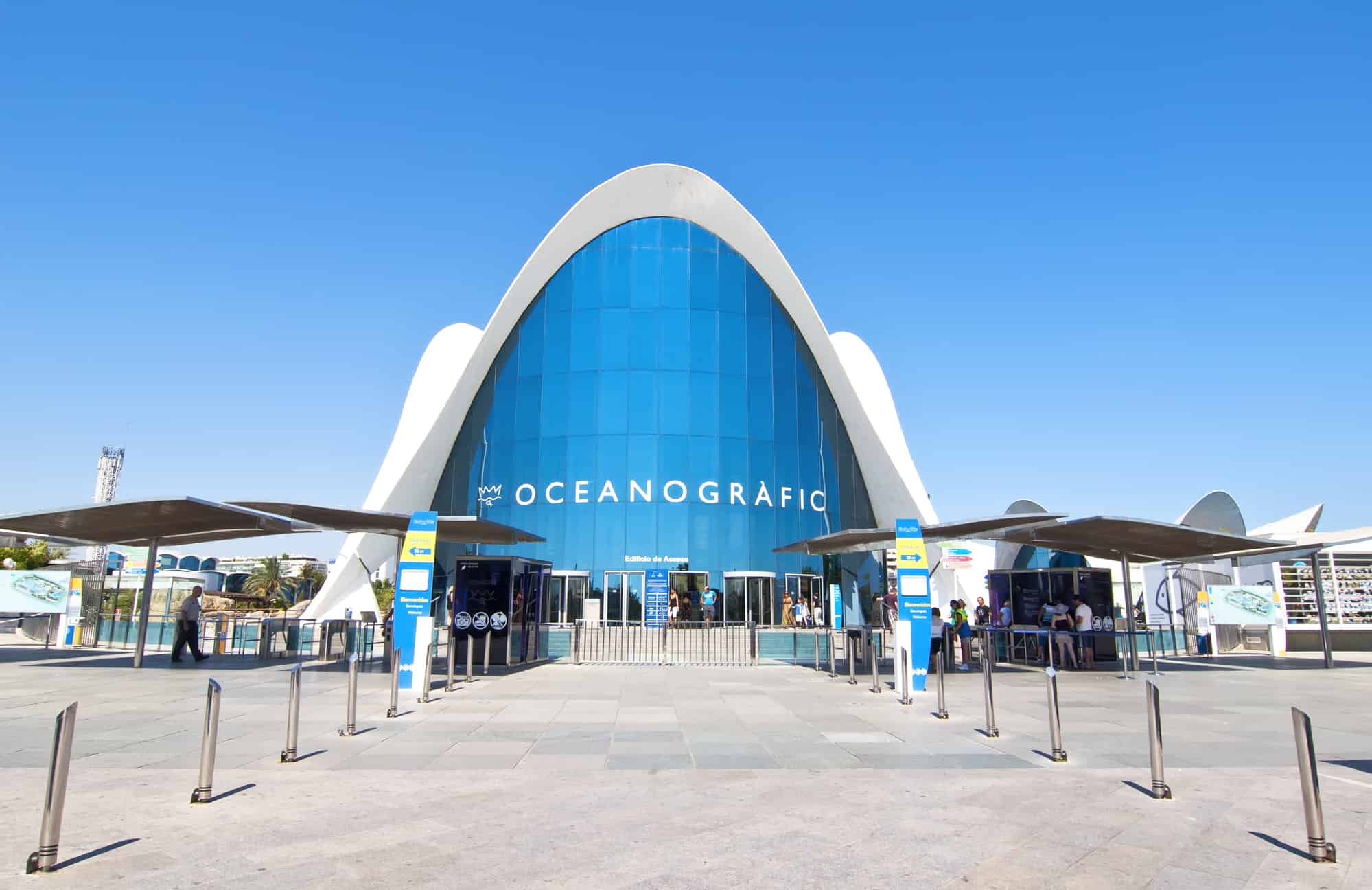
There’s something to entertain even the youngest family members in Valencia with incredible parks, museums, zoos, aquariums, and live music concerts.
You can spend time at The Prince Felipe Museum of Science with its story-themed, interactive activities. Head for Hemisfèric with its huge IMAX cinema, planetarium, and laserium. Or pop into L’Oceanogràfic – abundant with all kinds of marine life, from sea turtles to manatees.
Younger family members can learn about the history and architecture of Valencia on a hop-on/hop-off bus tour, enjoy visits to Valencia Bioparc Zoo, or head to one of the city parks or beaches for a fun day of leisure activities.
If you’re into sports, Valencia Football Club has an interactive tour; there are regular festivals and music concerts to attend in the city!
13. Expat communities
Foreign residents make up around 13% of Valencia’s total population. Although it doesn’t sound like a lot compared to other places, the city does have a vibrant expat community.
Around 1,000 of the 100k expats are said to be from the USA and Mexico, while most living in the city are from North Africa, South America, and other European countries.
The city attracts students, and more foreign residents settle by the year. Some of the best ways to connect with new people include attending events at international schools, joining local clubs and co-working spaces, and you can find local bars and restaurants with a distinctly expat vibe.
Where do expats live in Valencia, Spain?
Most expats want to immerse themselves in the Spanish lifestyle fully. Although there are 19 districts in Valencia to reside in, many live in the city center near bars, restaurants, beaches, and cultural attractions.
Some popular district choices include El Carmen (Ciutat Vella), Rufaza (popular with digital nomads), and Canovas – also known as La Gran Via. Students tend to opt for Benimaclet, close to the city’s universities, and those seeking larger accommodations with pools in gated communities can look at Alboraya and Puzol, slightly away from the center.
How many Americans live in Valencia, Spain?
According to recent figures, around 500 Americans live full-time in Valencia. Many U.S. residents wish to immerse themselves in the history and culture of Valencia. Therefore, they base themselves in, or close to, the historic center – Ciutat Vella. Those seeking a more upscale lifestyle, tend to move to La Gran Via.
14. Bike-friendly
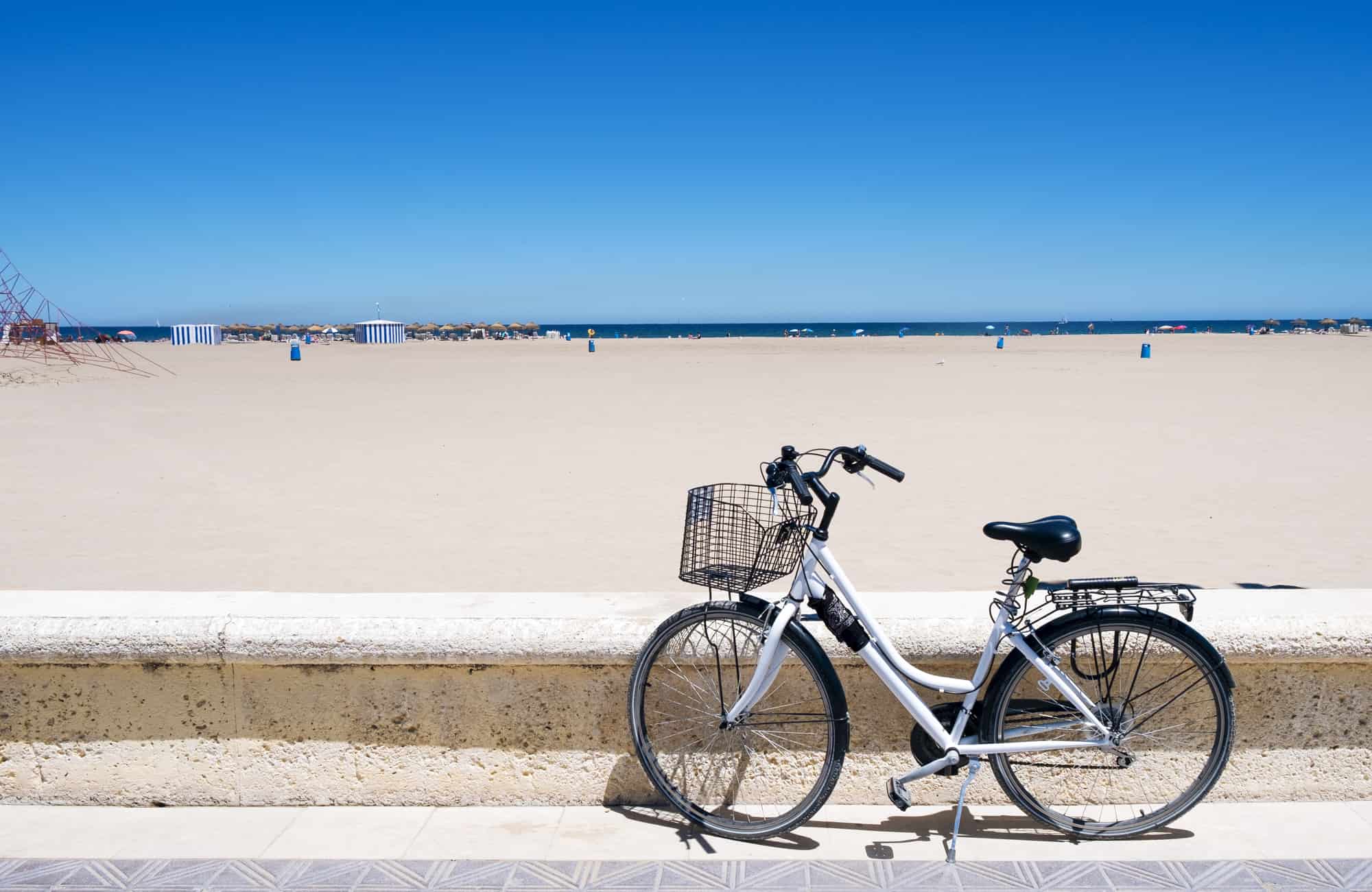
If you enjoy cycling, you’ll adore Valencia. The city center has over 150 kilometers of cycle paths, and the terrain is flat, making everywhere super easy to navigate. Most beaches and parks are accessible via bike, and rentals are available throughout the city.
15. Universities
Valencia offers high-quality education to children of all ages. Whether you’re traveling with younger kids and want to enroll them in an international school or are seeking the best universities, this city has it all.
The two main public universities are Universitat Politècnica de València and Universitat de Valencia. The latter, one of Europe’s oldest uni’s, offers 100+ master’s degree programs, 50+ bachelor’s, and 60 doctorate programs.
Several private universities, including the European University, Florida Universitària, Cardenal Herrera -CEU, and LABA Valencia, are also considered, focused on art, design, and new media.
16. Safety
Valencia is one of the safest cities in Europe. The crime rates are minimal, although, as with most big cities, you should take care of valuables in busy tourist areas due to the presence of pickpockets.
Walking alone during the day and night is safe, and crime incidents across the board are low.
17. Beautiful nearby spots
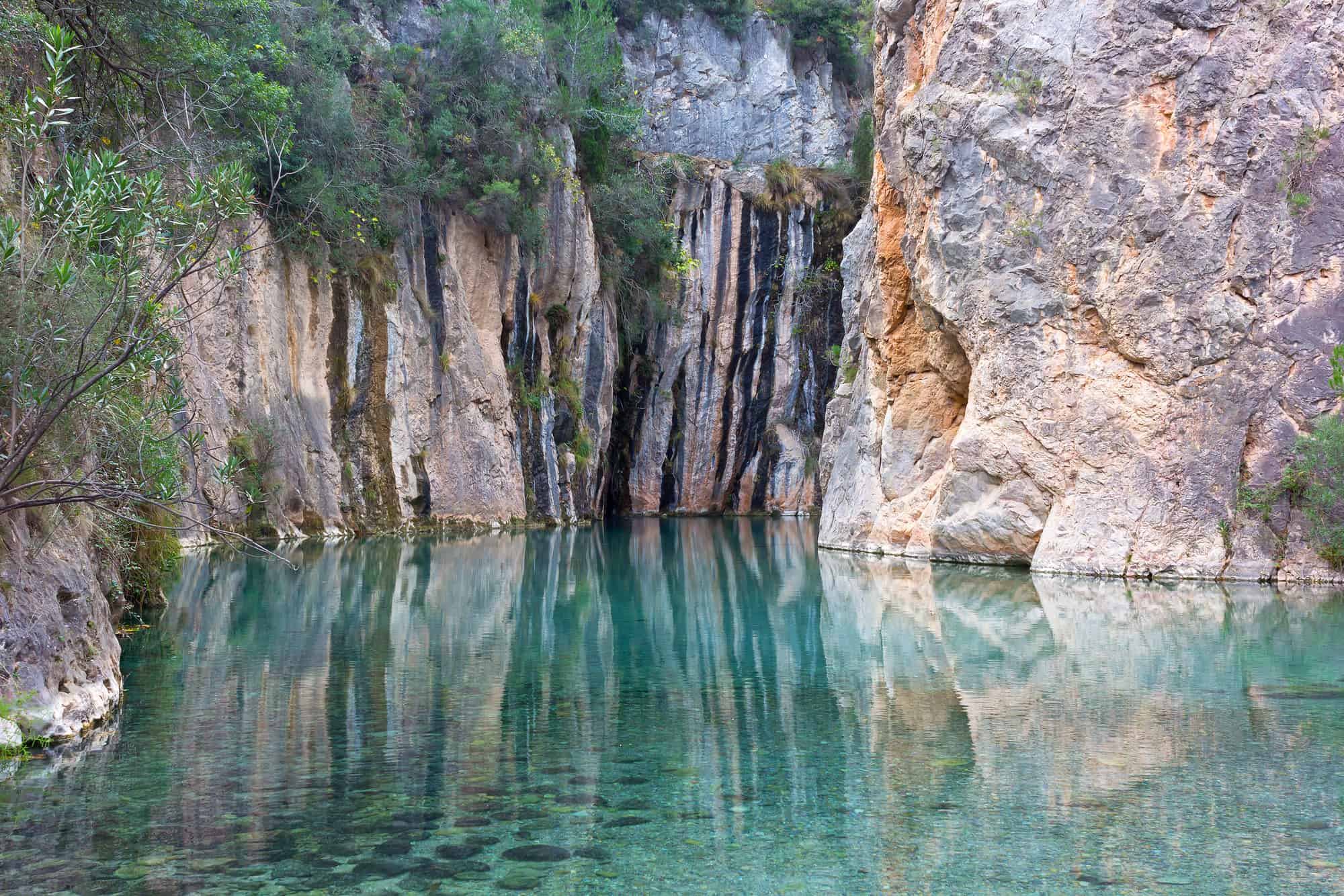
Although there are many things to do in Valencia, if you live here full-time, it’s only natural to want to explore further afield. Here are my top scenic places to visit nearby.
- Peniscola Castle – scenic fortress overlooking the sea with a rich history
- Caves of Saint José – home to the longest underground river in Europe with boat tours
- Javea – great beaches and a charming old town dating to Roman times
- Sagunto Castle – 2,000-year-old hilltop castle with an archaeological museum
- Montanejos Hot Springs – A favorite bathing area for Moorish nobility, great for snorkeling and swimming
- Morella – Ancient hilltop walled city with prehistoric remains
- Albufera National Park – Great wetlands for birdwatching and boat rides
18. Free healthcare for EU citizens
EU citizens moving to Spain can take advantage of the free healthcare system. All basic services are free. More complex procedures and prescriptions are chargeable but still reasonably priced compared to elsewhere in the world.
You can order an EHIC health insurance card or use your own travel insurance. If you’re not an EU citizen, you can still access public healthcare via your social security number if you contribute to the system.
19. The lifestyle
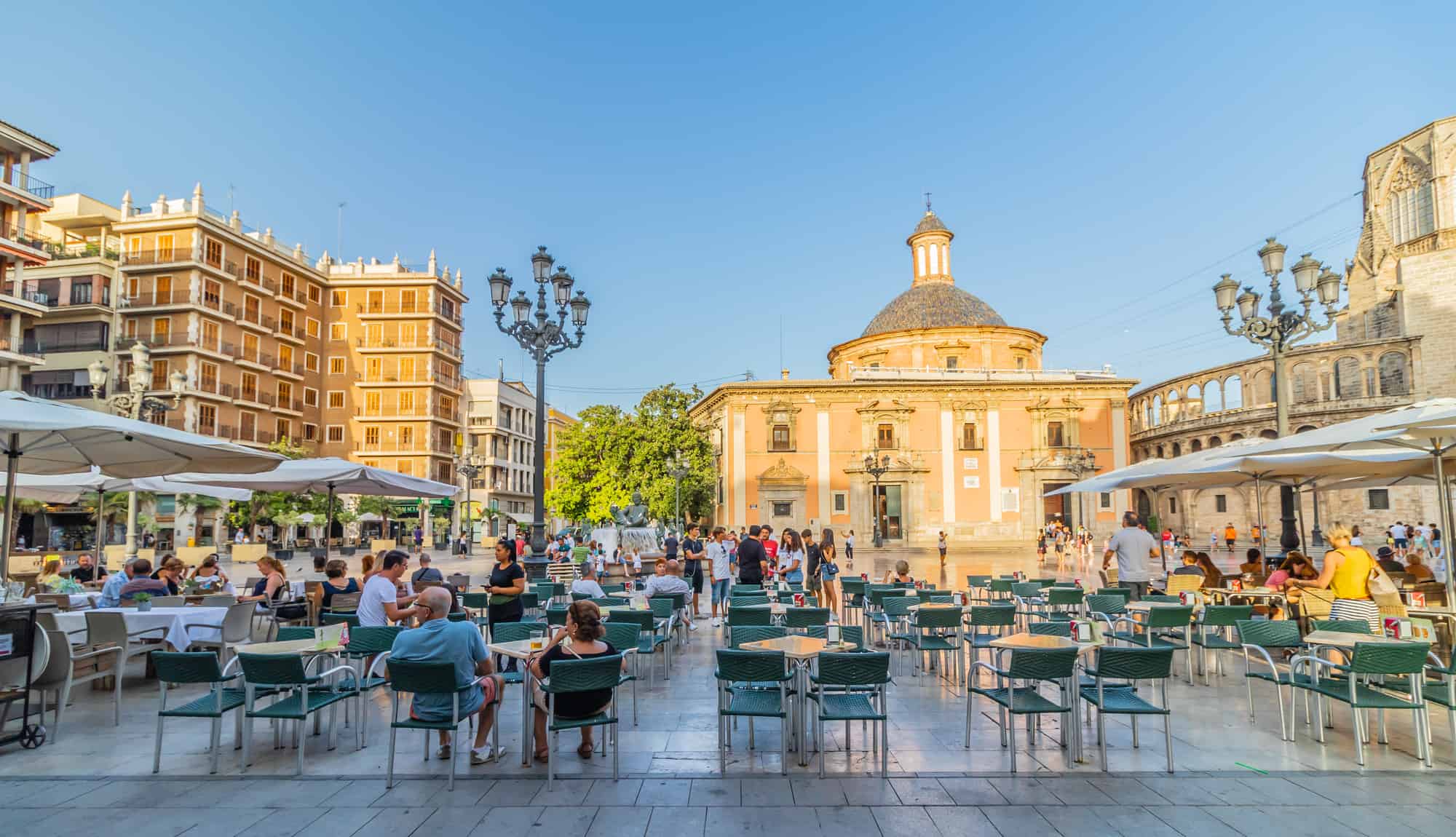
The Spanish lifestyle is laid back and relaxed. Some shops and offices still close in the afternoons for “siesta” and it’s usual to see families and friends dining, taking a promenade stroll, or sipping wine outdoors until late in the evening, thanks to the great weather.
Weekends are often spent on the beach with friends, in the countryside hiking, picnicking in the parks, or enjoying barbeques alfresco. Very little time is spent indoors on computers or watching television. These activities are replaced with a healthy outdoor lifestyle and quality time spent with family and friends.
Cons of living in Valencia
As with any other city, there are pros and cons to living in Valencia, Spain. In my opinion, having lived there, the pros outweighed the cons. However, I feel it’s important to detail any downsides to living here too, so you don’t arrive at any unwelcome surprises.
1. Extremely busy tourist season
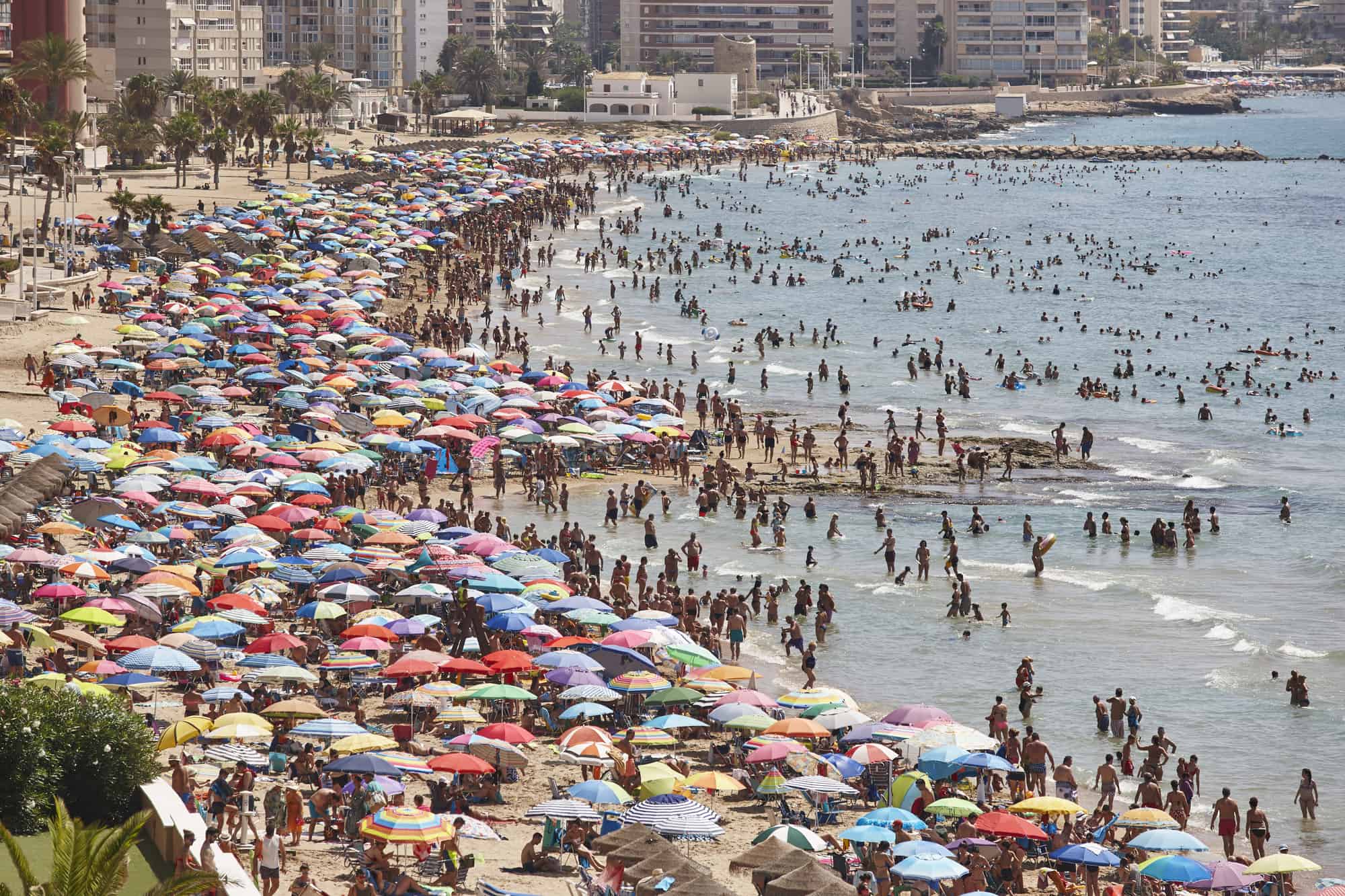
July and August are very busy in Valencia. Spanish residents living in the interior of Spain (where it gets very hot) travel to the coast on vacation during these times, and Valencia is one of their favorite spots.
During the Fallas Festival in March, Easter, and July Feria, the city also attracts tens of thousands of people. It can get hectic, and you may struggle to find tables in restaurants and parking on your residential street.
2. Low career opportunities
Unless you’re working in the language, tourism, or teleworking industries, and speak Spanish fluently, there’s a distinct lack of work for expats in Valencia.
If you’re a digital nomad and can work from anywhere, you won’t encounter many problems as the internet is fast and cheap. However, consider the time difference if you plan to work remotely.
If you plan to find an English-speaking (TEFL) job or want to work in tourism, real estate, or hospitality, look at the tourist areas on the Costa Blanca, such as Benidorm, Calpe, and Alicante, as there may be more opportunities.
3. Low salary wages

Over 50% of residents in Valencia earn less than €2,650 EUR per month. This can be quite a stretch for a family of four unless two adults are working. A monthly salary for non-skilled workers can be around €950 EUR depending on the trade and your experience.
4. Difficult housing market

More expats are moving to Valencia each year. Unfortunately, this leads to a competitive housing market. If you plan to purchase a city property, be mindful that most properties sell within a month of going on sale.
Searching for apartments to rent is also a challenge due to high demand. I would advise a short trip to source a rental property for your stay’s first 6-12 months.
This will allow you to see if you enjoy living in the city, plus, you have time to discover each district and choose a property that’s right for the long term.
Outdated apartments
Most apartments are old and outdated in the historic center and around La Gran Via. The interiors are tired and shabby, and some Spanish landlords have a penchant for dark, bulky furniture. However, if you don’t mind decorating yourself, and investing in light-colored furnishings, you can make these places look cozy and homely.
If you’re seeking a more modern environment, you may have to look at properties on the city’s outskirts. New apartments, townhouses, and villas are being constructed in the suburbs. You may get more for your money and a nicer accommodation.
5. Bureaucracy
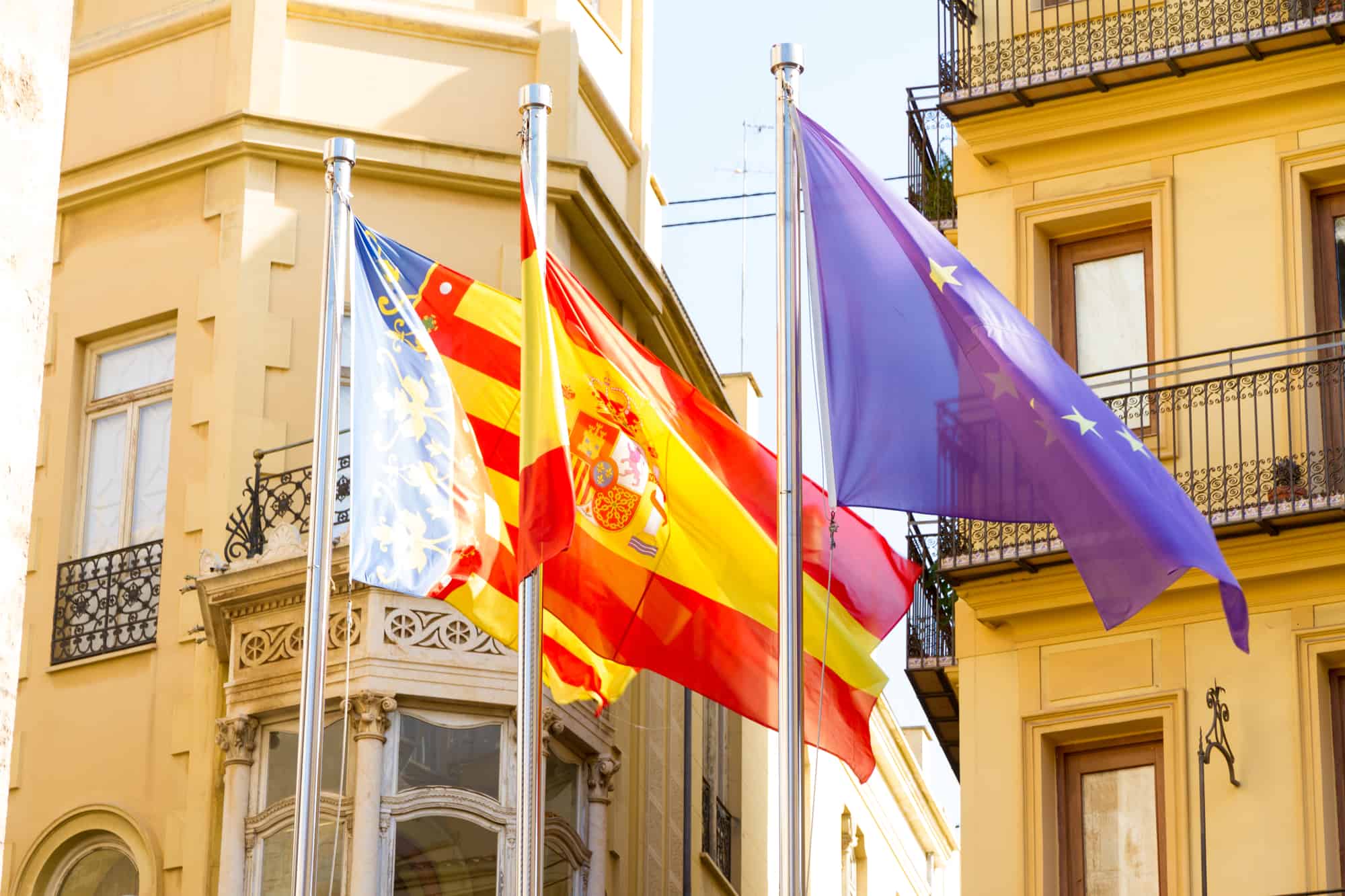
Everyone who has lived in Spain will tell you that the “mañana” concept is real. The phrase “tomorrow” literally means there’s no rush – for anything.
This can be frustrating if you’re waiting to incorporate a company or trying to close on a property. To a newcomer, there also appears to be a lot of red tape and paperwork required for the simplest tasks.
You can hire a “gestor” to help you make sense of documents if you struggle with the language. Their services are usually reasonably priced. My advice is not to stress about it. Everything gets done eventually; sometimes, the bureaucrats need a gentle nudge…
6. English is not common
Most locals in the city converse in Spanish or Valencian, and English isn’t widely spoken. However, if your heart is set on moving to Valencia, don’t fret – not speaking the local language isn’t as much of a barrier as it was ten years ago. Translation and language apps enable you to study Spanish at your leisure – you can pick up the basics quickly!
7. Taxis are expensive
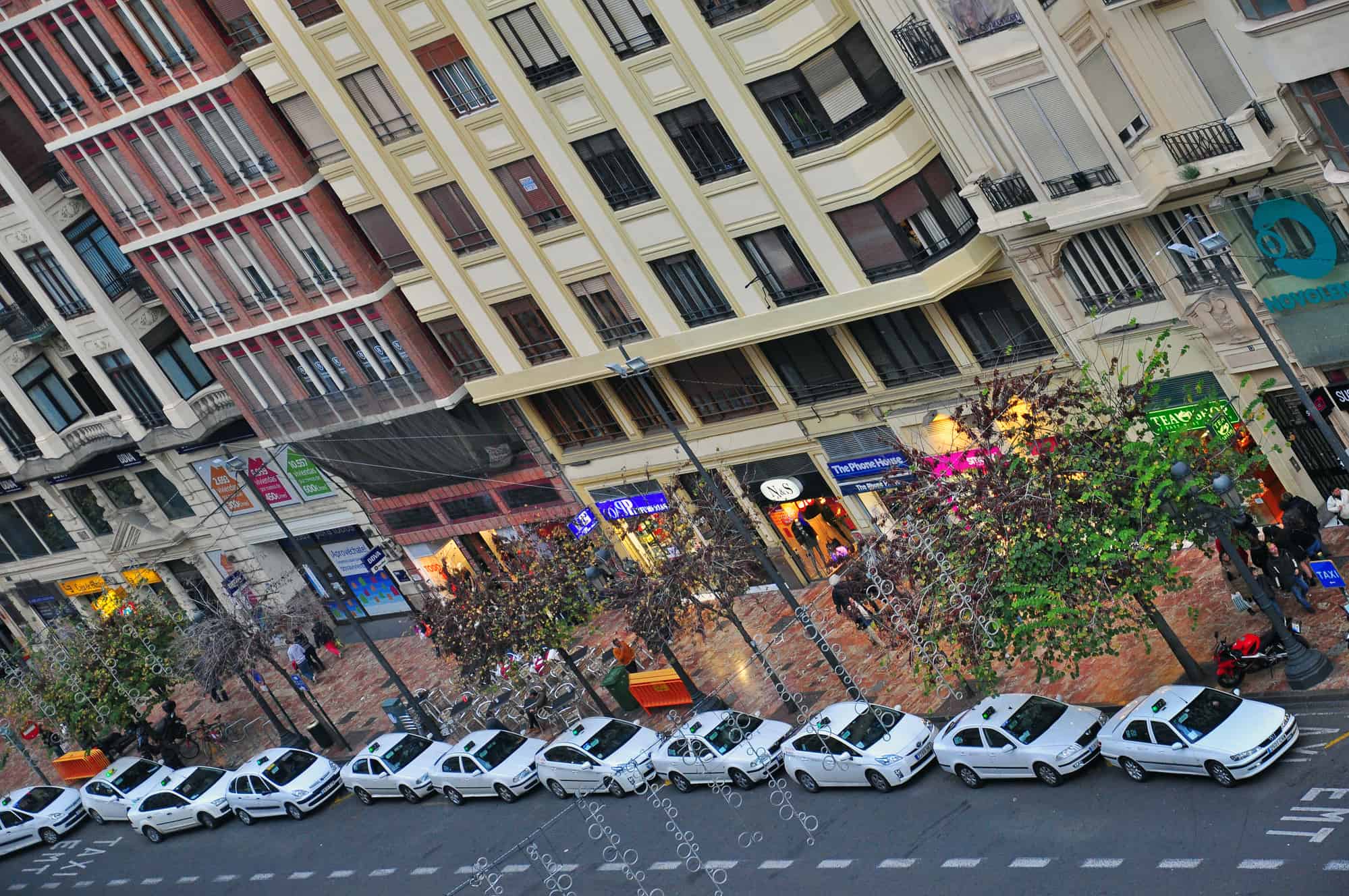
The public transport service in Valencia may be cheap, but taxis are expensive. The local government sets the prices via an official tariff, meaning one company can’t undercut another.
Meters are usually installed in the cabs, but there’s a base rate of around €4,00 EUR before you even move!
The price per kilometer equates to around €1,09 EUR increasing in the evenings after 10 pm. If you ask a taxi to wait for you (on arrival at an airport etc.), expect to pay up to €20 EUR per hour they have to wait.
8. Hot summers
I love long, hot summers, but with over 300 days of sunshine every year, you occasionally miss the seasons.
It is cooler in the winter, although Valencia rarely has rain, and the weather is hot from early May until late October.
It can also get pretty muggy and humid, reaching as high as 78% during the peak season. If you think the heat may be an issue, choose a property with air conditioning or fans installed to keep your home cool.
9. Shops are closed on Sundays
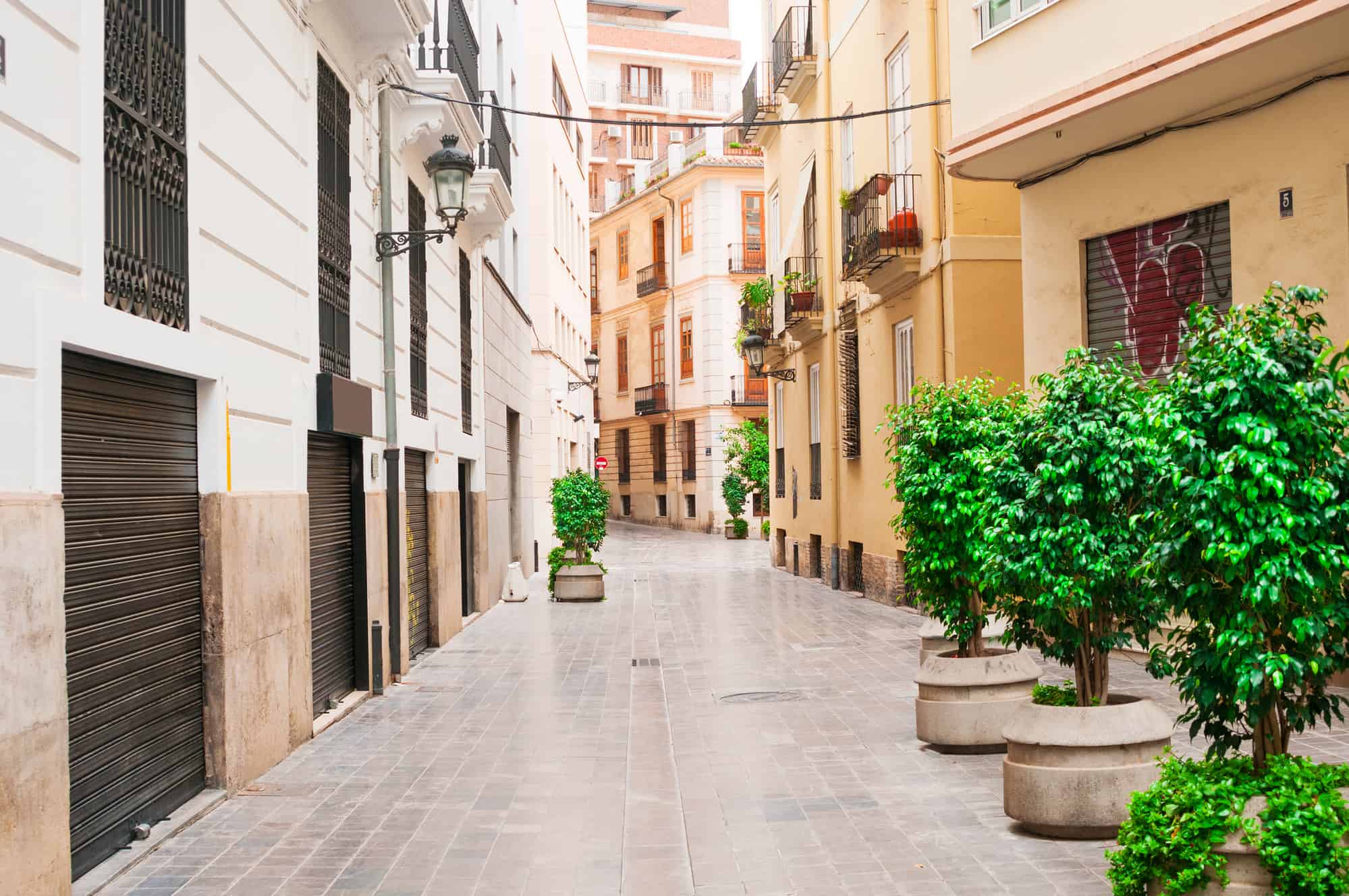
Most shopping malls and department stores in Europe are open on Sundays, but in Valencia, they are closed. Cafes, bars, and restaurants remain open and you may find a souvenir shop or two tradings, but most stores are closed, allowing locals to have a well-earned day of rest. This is also the same on public holidays.
Moving to Valencia, Spain
If your interest has been piqued and you’re considering moving to Valencia, take your time, do your research, and try to find forums where you can speak to expats who’ve made the move before you. They won’t sugarcoat anything, telling you exactly how things are, so you have all the information before making a final decision.
If you’re working with an English-speaking estate agent or have booked a stay, ask for advice on the best places to go and how to meet people during your exploration trip. These little actions can help to prepare you for a more permanent move to Spain.
Living in Valencia vs Barcelona
My personal opinion is if you prefer quiet, a space with lots of parks, nature, and lower costs of living, Valencia should be your top choice.
Barcelona is a great option if you’re young and want to meet like-minded people, don’t mind crowds, and enjoy a vibrant party lifestyle and nightlife.
Living in Valencia vs Madrid
Valencia and Madrid are similar, from the architecture to the general vibe. However, Madrid gets hot in the summer without a place to cool off. I remember a typical Spanish song of Madrid that goes “Vaya, vaya, aqui no hay playa” which translates to “Unfortunately we don’t have a beach,” and it’s true, they don’t.
Madrid is family-friendly, but Valencia is the perfect choice if you want the best of everything. And, you can always visit Madrid via the high-speed rail service!
Final thoughts on living in Valencia
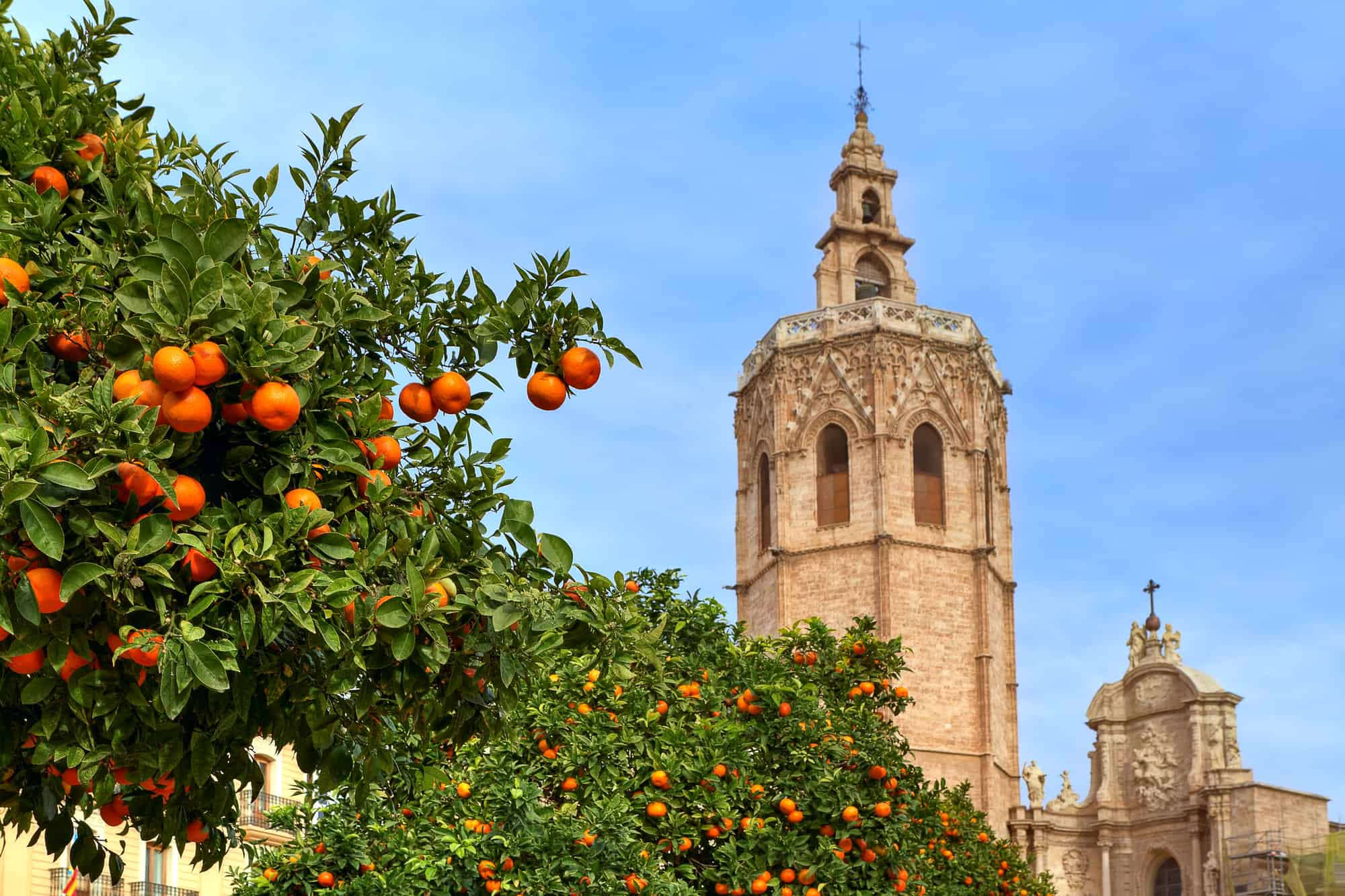
Valencia does have it all. A great Mediterranean lifestyle, a low cost of living compared to other Spanish cities, fabulous weather, and the chance to experience arts, culture, festivals, lively nightlife, and delicious cuisine all in one place.
Of all the cities to live in Spain, it’s a favorite of mine. It offers a completely different way of life which is incredibly rewarding, whether traveling solo, as a couple, or as a family unit.
Search the site
Popular Destinations
Just letting you know
When you buy something through our links, we’ll earn a small commission—don’t worry, it won’t cost you any extra! It’s a win-win, right?
Exclusive Heymondo Travel Insurance Offer
Planning a trip? Make sure you’re covered! We’ve teamed up with Heymondo to give our readers a special deal: 5% off travel insurance. Grab this deal and know you’re looked after on your next trip.





